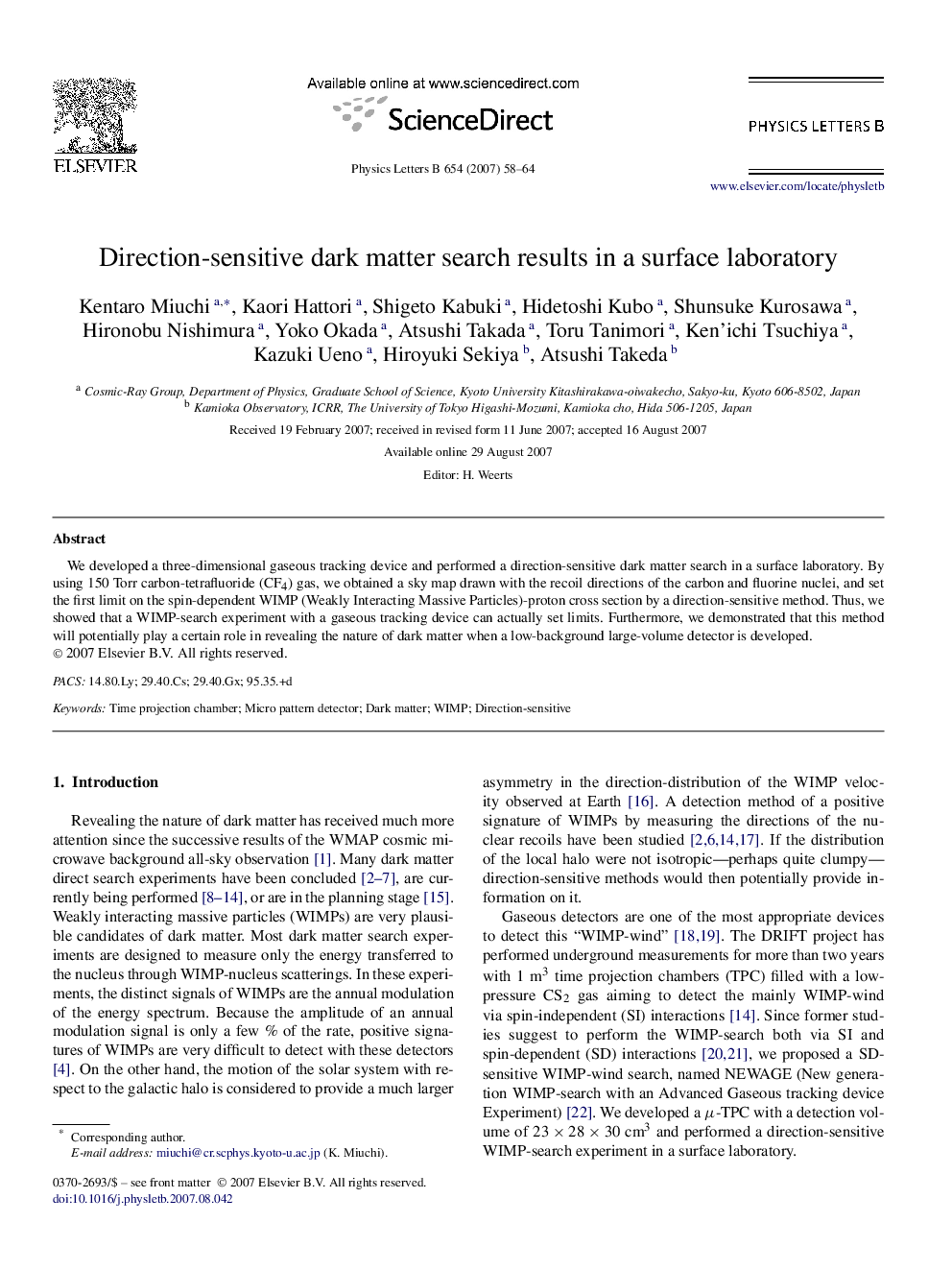| Article ID | Journal | Published Year | Pages | File Type |
|---|---|---|---|---|
| 8196561 | Physics Letters B | 2007 | 7 Pages |
Abstract
We developed a three-dimensional gaseous tracking device and performed a direction-sensitive dark matter search in a surface laboratory. By using 150 Torr carbon-tetrafluoride (CF4) gas, we obtained a sky map drawn with the recoil directions of the carbon and fluorine nuclei, and set the first limit on the spin-dependent WIMP (Weakly Interacting Massive Particles)-proton cross section by a direction-sensitive method. Thus, we showed that a WIMP-search experiment with a gaseous tracking device can actually set limits. Furthermore, we demonstrated that this method will potentially play a certain role in revealing the nature of dark matter when a low-background large-volume detector is developed.
Related Topics
Physical Sciences and Engineering
Physics and Astronomy
Nuclear and High Energy Physics
Authors
Kentaro Miuchi, Kaori Hattori, Shigeto Kabuki, Hidetoshi Kubo, Shunsuke Kurosawa, Hironobu Nishimura, Yoko Okada, Atsushi Takada, Toru Tanimori, Ken'ichi Tsuchiya, Kazuki Ueno, Hiroyuki Sekiya, Atsushi Takeda,
